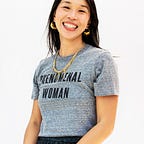Toward Harmony: A New Work-Life Balance
A few weeks ago, I awoke with an idea and quickly jotted it down: “Bring your whole self to the work that is life.”
The notion of “bringing your whole self to work” was popularized by organizational development consultant, Mike Robbins. Robbins says that bringing your whole self to work is “showing up authentically, leading with humility, and remembering that we’re all vulnerable, imperfect human beings doing the best we can.” But, I wondered, now that our homes are our workplaces, what does that mean for how we show up? Could the confluence of work and home actually teach us how to bring our whole selves to our work—and life?
You see, I’ve been trying to find the holy grail of work-life balance for decades now. Before having children, it was about juggling my love for my work with the other things I loved — seeing art, training in martial arts, and exploring the city. When my children came along, the tightrope walk of career and family became even more difficult. Yet, I was determined to weave together my professional work, my personal passions, and my commitment to my family. This determination drove me to create Redefining Having It All to support female empowerment by celebrating the beautiful diversity of women’s ambition globally.
Then along came 2020, a year that turned any sense of work-life balance on its head. This is true especially for women, and particularly mothers. Disproportionate numbers of women have lost or left their jobs and/or are considering scaling back their roles in order to care for their families. And for those still trying to work full time, lockdowns and schooling from home have brought utter chaos to both work and life domains.
Many of us no longer “go to work” and return home. We work constantly in our bedrooms, living rooms, kitchens, garages, and in stolen corners of our homes. Cats walk across desks, partners accidentally barge into meetings, and kids have ill-timed tantrums. While we do our paid work, we are simultaneously doing the work of logging our kids into their online classes, negotiating with our partners for focused time, leaving our kids to their own devices (literally), and then worrying about the inordinate amount of screen time. And we see our colleagues, bosses, and teachers inside their homes, surrounded by their lives.
Our intimate and professional lives have become inextricably intertwined in a way that we have never experienced. Whether or not we want to do so, we are bringing our whole selves to work, and with this wholeness comes the humanity of being whole people.
The pandemic has brought frustration, anger, boredom, sadness, and isolation, but it has also forced us to learn new ways of being. Through the blur of work and life, we are coming to realize the tremendous gifts of insight that this pandemic has given us. And one of those gifts is embracing wholeness.
When I woke up and jotted down what soon became my new mantra — “Bring your whole self to the work that is life” — I realized that along with tragedy and compromise, the pandemic has brought innovation and new ways of seeing and being. These are not just ways of adapting in the short-term but can be long-term shifts in our mindsets, our values, and priorities. We are moving toward a new sense of wholeness and — dare I say — of work-life harmony.
Wholeness. Harmony. They are positive ideas we all need more of, but women particularly need more of these right now. I’ve always been interested in investigating women’s sense of ambition and wholeness, but this exploration seems more important than ever. With this in mind, I’ve been conducting research with over 100 working women in the hope of understanding how we move forward in this new normal. Over the next few weeks, I’ll share women’s stories of work/life balance and hope that we can start building a new movement together.
In the meantime, I invite you to take a moment to reflect on how you are feeling about the current “balance” between work and life. Why do you feel this way? Think about how your work and your personal life have changed since the start of the pandemic.
What did “having it all” mean to you before the pandemic? How has this definition — of wholeness, success, work/life balance — changed for you recently?
What are some new habits or values that help create a sense of work-life harmony? Why are these habits and values important to you? And how might you keep these new habits and values alive when things return to the “new normal” in the future?
About the author
Etienne Fang is a human-centered research and strategy leader who is passionate about people and the power of their stories to create new value. She is a principal researcher at Amazon, has led research teams at Uber, founded consumer strategy practices at Method Products and VF Corporation, and led innovation design at The Clorox Company. Etienne is the founder of Redefining Having It All, a non-profit organization that supports female empowerment through celebrating the beautiful diversity of women’s ambition globally. Etienne lives in the San Francisco Bay Area with her husband and two sons.
